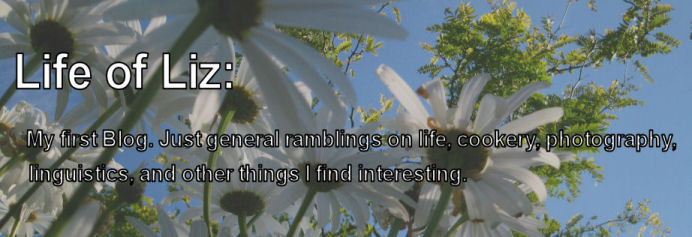For my assignment, I must analyse the sketch using only TWO of the following: Phonetics/Phonology, Syntax or Semantics and I'm not sure which pair would produce the most interesting essay. Here are my notes on each one, I'd appreciate any comments on what you think I should do or anything interesting you have noticed in the sketch.
Phonetics/Phonology
- Structure of nonsense words such as ‘tish’, ‘vibble’, ‘lovelet’, – compare ‘tish’ to ‘hush’ - these follow the English phonetic system in that they use only combinations of sounds permissable in English - how is it that we can imagine a 'sense' for these words having never heard them before?
- Occasional usage of full forms where a weak form would be more typical in connected speech - Fry uses this to enhance his 'academic' character
- Alliteration ‘explain, expound and exposit’, ‘colours and contains’ ‘find…mind’ ‘beauty duty’
- Alliteration of nasals ‘tumble, emolument…smitten, plenum’
- Stress placed in unusual places i.e 'extrinsic, extrinsic'
- Odd tone / speed of delivery: Intonation.
Syntax
- Morphology of novel coins such as ‘correctington’, ‘lovelet’, - for example, it is obvious 'lovelet' is a term of endearment because it is composed of the noun 'love' plus suffix 'let' which signals a diminutive as in 'piglet' (small/young pig)
- Examples of all major sentence types including more unusual such as:
- Vocative: ‘hold that for me Jefferey would you’
- Coordination at sentence part level – i.e. verb coordination ‘expand and exposit’
- Relative clause: ‘a tool that we use to dig up the beauty that surrounds us’
- Wh-question: ‘where is it?’
- Extraposition: ‘I think it was Karl Kraus’ (?) - not sure if this really is extraposition!
- • Very complex sentences ‘you contain a property of beauty therefore the substance of which you exhibit a property must exist’ •
- Parallel structures ‘the idea of beauty and the beauty of ideas’ •
- Verbless sentence ‘Noel, as you so rightly, Harrison’ - 'say' is omitted here - to what effect?
- • Contrast of Fry’s long complex utterances with Laurie’s much shorter simple sentences ‘I’m going to hold a thought now’, ‘we’ve made a return to language’- this is definitely a comic device as the juxtaposition makes Laurie's replies all the more incongruous
Semantics
- Usage of several sets of synonyms explain+expound/expand+exposit - what kind of relationship are these in? Are they synonyms, or do the different subtle meanings add something?
- (syntax or semantics?) Use of simile and metaphor – ‘language is a tool’, ‘the bows of my imaginings’, ‘wheel on wheel like the circles that we find in the windmills of our mind’ unusual semantic links –
- Words presented as synonymous, or at least related, such as:‘the gulf the chasm the dividing line’‘a pattern a template a paradigm an ideal an idea’‘pursues, harries, hounds’ - because these sometimes ARE synonymous, and sometimes are not, the incongruity of some of the combinations leads to humour • use of unusual and archaic language: paradigm, plenitude, bade, plenum, emolument - By the way, the meanings of these words are as follows:
plenum – area full of heated or cooled air
emolument – earnings, pay, compensation
paradigm – in grammar – a set of inflected forms, in common usage – an example serving as a model
plenitude – fullness or adequacy in quantity, measure, or degree; abundance: a plenitude of food, air, and sunlight, the state of being full or complete
Your comments/criticisms/input would be greatly appreciated

